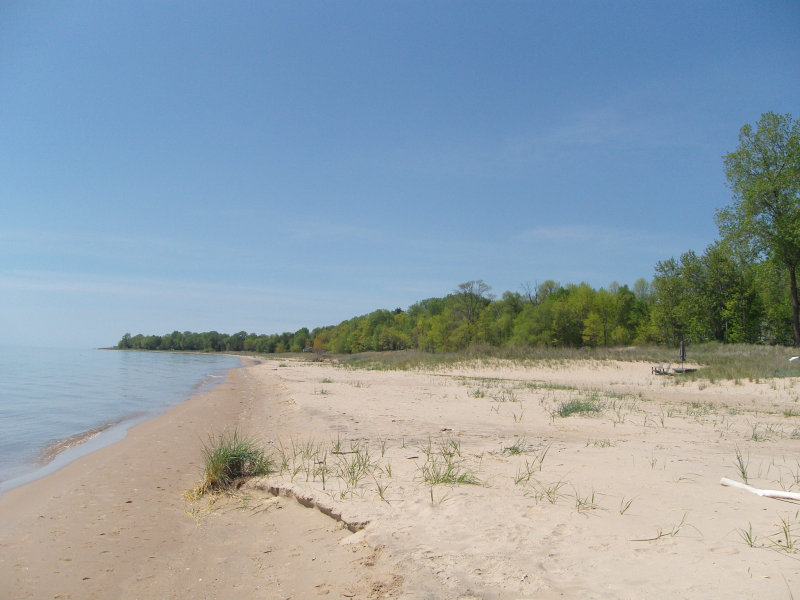This week, we’re sharing some of the ways NOAA monitors and predicts, responds to, and prepares for the impacts of climate change. In this blog, learn more about the different types of restoration used to help recover from and mitigate the impacts of severe storm events, and coastal pollution.

Climate change, with its rising sea levels and increasingly frequent severe storm events, and coastal pollution are two of the most pressing challenges coastal communities face today. However, sometimes marine pollution settlements can provide opportunities to increase their resilience to climate change, sequester blue carbon, and bolster sensitive ecosystems.
Over the last 30+ years NOAA’s Damage Assessment, Remediation, and Restoration Program has recovered over $10.4 billion from polluters to restore thousands of acres of wetlands, beaches, oyster reefs, corals, and sea grasses, protected species like marine mammals and sea turtles, and increased access to outdoor recreation. This benefits not only wildlife, but also the communities and economies that depend on clean waters and robust fisheries.
Successful restoration takes sound science and requires input from local experts and communities. This promotes projects that help ecosystems bounce back faster and better equipped to face threats from climate change. In turn, these resilient ecosystems help to buffer the impacts of climate change for coastal communities.
Let’s explore the types of restoration projects that bolster coastal resilience to climate change.
Salt Marsh Restoration
Not only does tidal salt marsh absorb 8.1 million tons of carbon dioxide in the U.S each year, they also protect coastal communities. With their thickly knotted roots, salt marshes buffer waves and reduce flooding during storms. 1.5 million gallons of floodwater can be stored by 1 acre of salt marsh, which helps slow down and reduce damage from coastal flooding.
Coral Reef Restoration

Although coral reefs cover less than 1% of the ocean floor, they support roughly 25% of all marine life and foster important fisheries and tourism opportunities. These colonial invertebrates form their hard skeletons using calcium carbonate, which becomes more difficult as oceans warm and become more acidic. Restoration projects can help these important habitats become more resilient for the communities, economies, and species that depend on them.
Mangrove Restoration

Mangroves are unique coastal trees found in Florida and the Caribbean. Specialized roots allow mangroves to stabilize shorelines, trap sediments, reduce erosion, and increase coastal resiliency during storms. Mangroves also trap carbon, filter pollutants from the water, and provide important nurseries for many economically important fish and shellfish species.
Beach Restoration

Sandy beaches are dynamic environments on the edge of the ocean, making them vulnerable to rising sea levels and storm events. Hurricanes and flooding can severely erode beaches, threatening outdoor recreation, coastal infrastructure, and wildlife. Beaches are also critical habitat for species like protected sea turtles, which nest on the shore. Restoration projects can help beaches weather threats, benefiting coastal communities and wildlife.
Oyster Reef Restoration

Oysters are ecosystem engineers that form hard colonial reefs. One adult oyster can filter 50 gallons of water daily, improving water quality. They also help reduce erosion and stabilize shorelines. Because oyster reefs provide habitat for fish and other species, restored oyster reefs support healthier fish populations. These ecosystem services help bolster fishing economies and more resilient coastal communities.
Freshwater Wetland Restoration

Freshwater wetlands are among the most productive habitats on earth, providing important shelter for young fish. Freshwater wetlands act like a natural sponge, trapping pollution from runoff and filtering out impurities. They also absorb floodwaters and help combat climate change by trapping and storing carbon dioxide from the atmosphere.
Fish Passage Restoration

Migratory fish like salmon, herring, and eel are incredibly important fisheries, playing a pivotal role in coastal economies and many Native American cultures. Some fish need to swim thousands of miles through oceans and rivers to spawn, only to have their journeys blocked by man-made barriers like dams and culverts. Removing these barriers helps bolster migratory fish populations, making them more resilient to threats from climate change.
Submerged Aquatic Vegetation

Submerged aquatic vegetation (SAV) is an incredibly productive habitat, it’s estimated that one acre of SAV can shelter as many as 40,000 fish and 50 million tiny invertebrates. They also feed animals like manatees and pull carbon dioxide from the water. However, SAV is very sensitive to boat strikes, nutrient pollution, and siltation, which makes restoration very important to help these habitats become more resilient to threats like climate change.
Sand Dune Restoration

Marine and freshwater sand dunes along the Great Lakes and coastlines are unique ecosystems on the front lines of storms and sea level rise. Dune plants help to hold sand in place and absorb water from rainfall, while the dunes themselves buffer wind and protect coastlines. By restoring these sand dune habitats, not only are species of plants and animals protected, coastal communities are as well.
Restoring Outdoor Recreation Opportunities

America's coastal resources are public resources, so when pollution ruins a day at the beach those outdoor recreation activities require restoration. Part of coastal resilience is being aware of resources in your backyard, and outdoor recreation is a great way to learn about them. NOAA constructs projects like parks, boat ramps, fishing piers, environmental education centers, and hiking trails to increase access to nature and foster stewardship of coastal resources.
NOAA formally created the Damage Assessment, Remediation, and Restoration Program (DARRP) in 1992 in the aftermath of the Exxon Valdez oil spill as a joint effort of NOAA's Office of Response and Restoration, Office of Habitat Restoration, and Office of General Counsel, Natural Resources. To learn more about DARRP, visit our website and view our Restoration Atlas.


